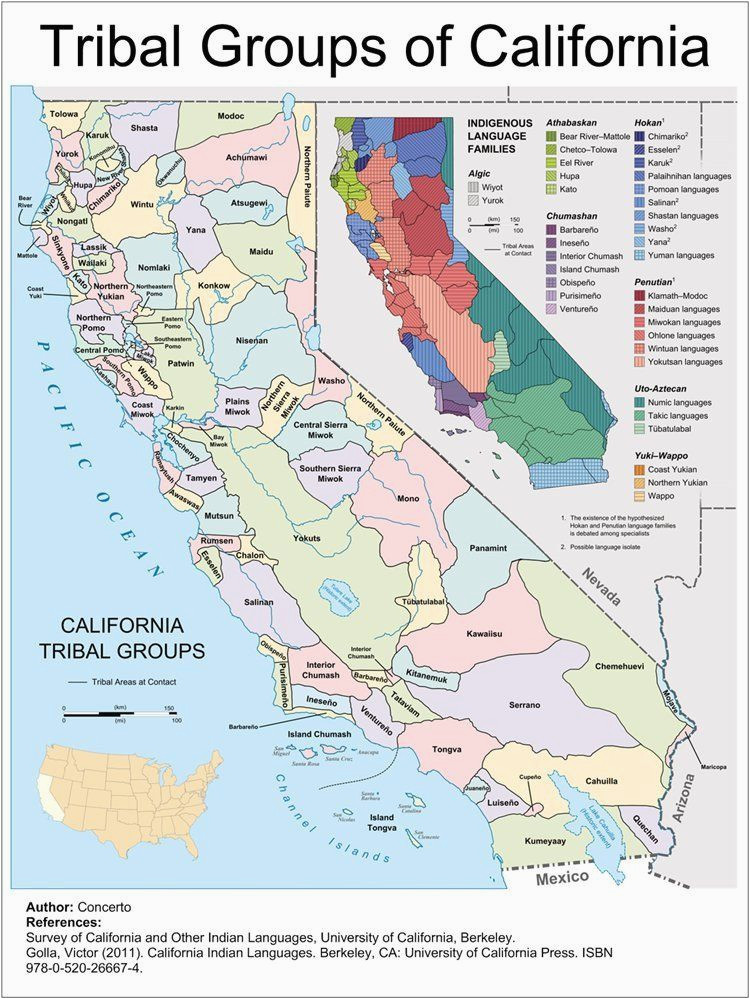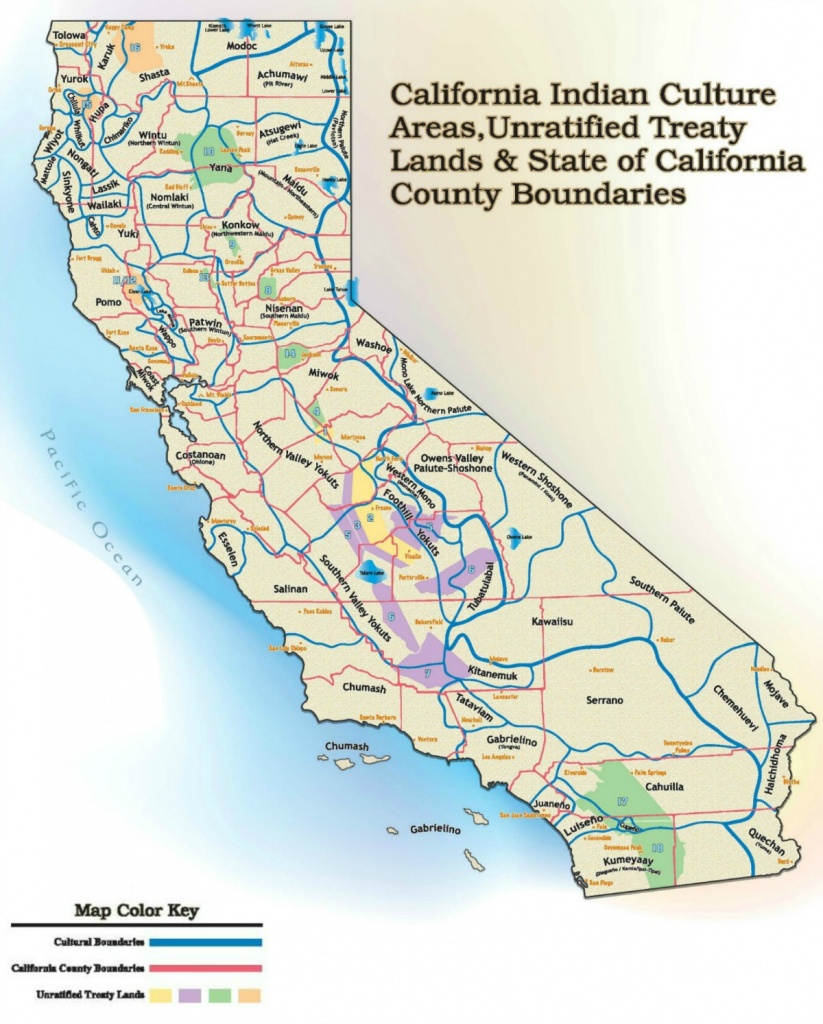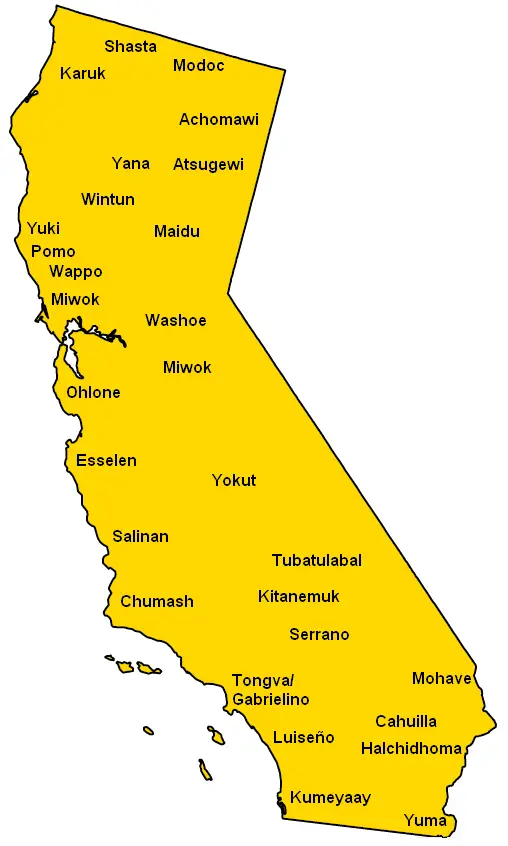Navigating the Tapestry of California’s Native Tribes: A Comprehensive Map and Guide
Navigating the Tapestry of California’s Native Tribes: A Comprehensive Map and Guide

California, a land of diverse landscapes and vibrant cultures, is also home to a rich tapestry of Native American tribes. Each tribe holds unique traditions, languages, and histories that have shaped the state’s past, present, and future. Understanding the intricate map of these tribes is crucial for appreciating the state’s true cultural heritage and fostering respect for its indigenous communities.
A History Woven into the Land:
Related Articles: Navigating the Tapestry of California’s Native Tribes: A Comprehensive Map and Guide
- Unlock the Secrets: Discover if the Mayans Hold Federal Recognition
- 10 Wealthiest Native American Tribes: Unveiling the Fortunes!
- Discover Apache Tribe’s Enigmatic Homeland!
- Wintun Nation: Unveiling the Heart of California’s Indigenous Heritage
- Discover the Enigmatic Beauty of Navajo Land: Nature’s Paradise Awaits!
For thousands of years, California’s Native tribes have thrived in harmony with the land. They developed sophisticated systems of agriculture, resource management, and governance, leaving behind an enduring legacy of cultural practices and ecological wisdom. From the towering redwoods of the north to the arid deserts of the south, each tribe adapted to its unique environment, creating a diverse mosaic of cultural expressions.
The Impact of Colonization:
The arrival of European colonizers in the 16th century marked a devastating turning point for California’s Native tribes. Displacement, disease, and forced assimilation took a heavy toll, leading to the decimation of populations and the suppression of traditional practices. Despite these hardships, the spirit of resilience and cultural preservation remained strong, inspiring generations to fight for recognition, self-determination, and the preservation of their heritage.
A Map of Cultural Diversity:
Understanding the geographical distribution of California’s Native tribes is essential for appreciating their unique stories and contributions. The state is home to over 100 federally recognized tribes, each with its own distinct language, cultural traditions, and ancestral lands.
Navigating the Map:
Northern California:
- Yurok Tribe: Located along the Klamath River, the Yurok Tribe is known for its deep connection to the salmon fishery and its rich basket weaving traditions.
- Hupa Tribe: Situated in the Trinity River Valley, the Hupa Tribe is known for its distinctive language and its expertise in crafting beautiful baskets and intricately carved wooden objects.
- Karuk Tribe: The Karuk Tribe, residing in the Klamath River basin, is renowned for its strong connection to the river, its traditional dances, and its skilled craftsmanship in basketry and beadwork.
- Tolowa Tribe: The Tolowa Tribe, inhabiting the coastal region of Northern California, is known for its unique language, its traditional fishing practices, and its intricate wood carvings.
- Wiyot Tribe: The Wiyot Tribe, located along the Humboldt Bay, is known for its distinctive language, its traditional fishing practices, and its expertise in basket weaving.


Central California:
- Miwok Tribe: The Miwok Tribe, inhabiting the Sierra Nevada foothills, is known for its diverse language dialects and its traditional practices in basketry, beadwork, and storytelling.
- Maidu Tribe: The Maidu Tribe, residing in the Sierra Nevada foothills, is known for its distinctive language, its intricate basketry, and its traditional practices in hunting, gathering, and agriculture.
- Chumash Tribe: The Chumash Tribe, inhabiting the central coast of California, is known for its distinctive language, its expertise in canoe building and seafaring, and its intricate rock art.
- Yokuts Tribe: The Yokuts Tribe, inhabiting the San Joaquin Valley, is known for its diverse language dialects, its traditional practices in agriculture, and its expertise in basket weaving.

Southern California:
- Tongva Tribe: The Tongva Tribe, inhabiting the Los Angeles Basin, is known for its distinctive language, its traditional practices in fishing, hunting, and gathering, and its intricate rock art.
- Cahuilla Tribe: The Cahuilla Tribe, inhabiting the Coachella Valley, is known for its distinctive language, its traditional practices in agriculture, and its expertise in basket weaving.
- Luiseño Tribe: The Luiseño Tribe, inhabiting the inland regions of Southern California, is known for its distinctive language, its traditional practices in hunting, gathering, and agriculture, and its intricate beadwork.
- Serrano Tribe: The Serrano Tribe, inhabiting the San Bernardino Mountains, is known for its distinctive language, its traditional practices in hunting, gathering, and agriculture, and its expertise in basket weaving.
Beyond the Map: Recognizing the Diversity Within:
This map is a starting point for understanding the rich tapestry of California’s Native tribes. It is important to recognize that each tribe has its own unique history, language, traditions, and cultural practices.
Respecting Tribal Sovereignty:
It is crucial to approach learning about California’s Native tribes with respect and sensitivity. Recognizing tribal sovereignty and engaging with tribes directly are essential for fostering understanding and building meaningful relationships.
Engaging with Tribal Communities:
- Visit tribal museums and cultural centers: Immerse yourself in the history, art, and traditions of California’s Native tribes.
- Attend tribal events and gatherings: Experience firsthand the vibrant cultural expressions and traditions of these communities.
- Support tribal businesses and initiatives: Contribute to the economic development and self-determination of California’s Native tribes.
Preserving Cultural Heritage:
The preservation of California’s Native heritage is a collective responsibility. By supporting tribal initiatives, advocating for their rights, and engaging with their communities, we can help ensure the survival and flourishing of these vibrant cultures for generations to come.
FAQ:
Q: How many Native American tribes are in California?
A: There are over 100 federally recognized tribes in California.
Q: What are some of the most common Native American languages spoken in California?
A: Some of the most common Native American languages spoken in California include Yurok, Hupa, Karuk, Tolowa, Wiyot, Miwok, Maidu, Chumash, Yokuts, Tongva, Cahuilla, Luiseño, and Serrano.
Q: What are some of the most important cultural traditions of California’s Native tribes?
A: Some of the most important cultural traditions of California’s Native tribes include basket weaving, beadwork, storytelling, traditional dances, fishing, hunting, gathering, and agriculture.
Q: How can I learn more about California’s Native tribes?
A: You can learn more about California’s Native tribes by visiting tribal museums and cultural centers, attending tribal events and gatherings, and supporting tribal businesses and initiatives. You can also find information online through tribal websites and resources.
Q: What are some ways I can support California’s Native tribes?
A: You can support California’s Native tribes by visiting their museums and cultural centers, attending their events and gatherings, purchasing goods from their businesses, and advocating for their rights. You can also donate to organizations that support tribal initiatives.
Conclusion:
California’s Native tribes are an integral part of the state’s cultural heritage. Understanding their history, traditions, and present-day struggles is essential for appreciating the true tapestry of California’s identity. By engaging with these communities, respecting their sovereignty, and supporting their efforts to preserve their heritage, we can contribute to the ongoing legacy of California’s Native tribes.

Closure
Thus, we hope this article has provided valuable insights into Navigating the Tapestry of California’s Native Tribes: A Comprehensive Map and Guide. We hope you find this article informative and beneficial. See you in our next article!